Single Pass vs. Multiple Pass: What Your Business Should Know About Data Destruction
by Stephanie Faris on Monday, September 4, 2017 10:30
Savvy businesses already realize that destroying old hard drives brings risks to an organization.
If the data on one of those drives can be read by the person who eventually ends up with that device, sensitive information could fall into the wrong hands.
When that happens, a business may be forced to pay expensive fines in addition to suffering reputation damage with customers.
To prevent this type of security breach, many businesses invest in pricey software that promises to erase everything on those drives.
In recent years, products have come on the market promising "multi-pass erasure," seemingly offering a greater sense of security, since each pass would catch any data that was missed in previous passes.
But do multiple passes make a difference?
Multiple Pass
The need for multiple pass erasure dates back to a 1996 paper titled, Secure Deletion of Data from Magnetic and Solid-State Memory.
The paper described the various ways a hacker could obtain data from magnetic media, even if the information on the drive had been erased.
However, drives have changed over the years, leading some experts to state that multiple passes aren't necessary.
The high stakes associated with security breaches have given many professionals a "just in case" mentality when it comes to hard drive erasure, though.
Even if multiple passes aren't necessary, if it simply takes more time during the process of offloading old equipment, it's well worth it for the peace of mind it brings.
Single Pass
Multiple-pass opponents point out that the way newer hard drives work, multiple-pass erasure tools are ineffective.
These experts say that one wipe is sufficient to erase everything on today's drives.
Wiping a drive replaces everything on it with 0s and 1s, the theory says, and subsequent wipes are only replacing those 0s and 1s with the same.
However, these theorists often refer to the overkill that comes with wiping a drive dozens of times, rather than the three to five times that are often provided by wiping tools.
Degaussing
Most experts agree that the safest way to protect the data on a hard drive is to use a process called degaussing, which uses a demagnetizing process to render the data on a drive inaccessible.
Unfortunately, once a drive has been degaussed, it can no longer be used, so this may not be an option for companies that plan to repurpose a drive in another area of operations.
For businesses donating or recycling old equipment, though, it's the only way to guarantee all data is completely gone.
Degaussing also provides the most satisfaction to compliance auditors, who will want to verify that a business is taking every measure possible to keep the data it collects and uses safe.
National Computer Warehouse Services provides data destruction services to businesses across the country.
Our two-step process involves degaussing and shredding each drive to provide businesses and their stakeholders with the peace of mind they need.
Contact us today to learn about our mobile hard drive destruction services, which we can perform at your place of business at affordable rates.
